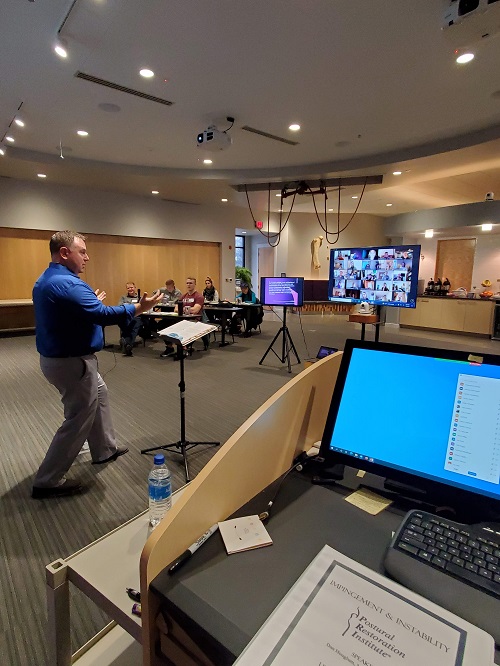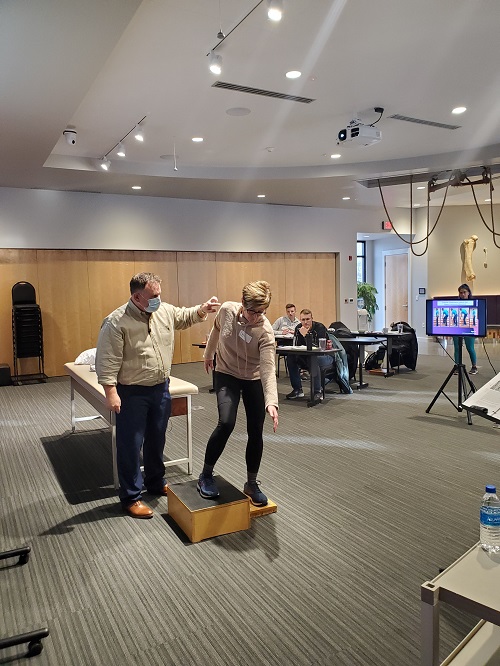The Impingement and Instability course was the kick-off for PRI in 2022, and I was fortunate to be able to have several friends and colleagues in the audience. With this course being updated only two years ago, it has a decided different feel compared to the previous iterations. We were fortunate to have nearly 50 attendees via Zoom from 10 different countries, and 8 movement professionals in-person. With so much PRI experience "in the room", both in-person and virtual, we were afforded the luxury of delving into the neurology of PRI.

Our ability to make substantial and long-standing change to our posture is dependent upon our ability to change how our brain perceives the environment and gravity. This course explains how that occurs and why reference centers are a better "road map" for us to be able to modify our patterns and habits. Starting at the calcaneus and talus, we discussed integration of the femur and why we need it to be unstable, which lead us to the pelvis and why pelvic inlets and outlets are linked to the calcaneus. We were able to spend nearly 4 hours on linking the scapula and underlying thorax to the pelvis and femur and calcaneus. Our ability to compress and decompress several different "floors" on each side allows our body to make sense of this Morse Code-like alternation for improved posture, patterns, and respiration.

My thanks to the entire crew from Edge Physical Therapy: Beth, Mike, Brett, and Eric. Thank you for your questions and dialogue. And thank you to Meg and allowing us to learn from your experience of what it finally means to feel the floor under your feet. And thanks to Lori Thompson and taking the time to go through the Shoe List. That was a perfect conversation at the part of the course, and I truly hope those in attendance understand just how unique that experience was for all of us. Thanks to all of those who attended, and here’s to a wonderful 2022!


